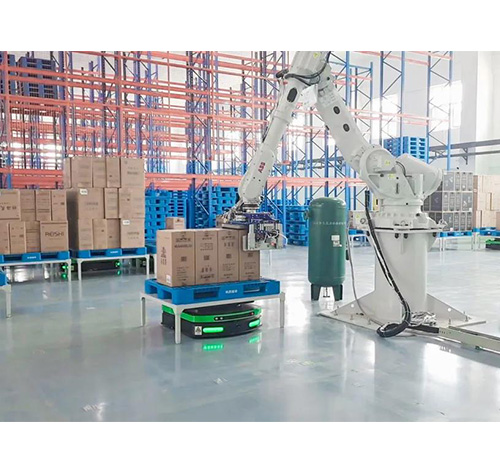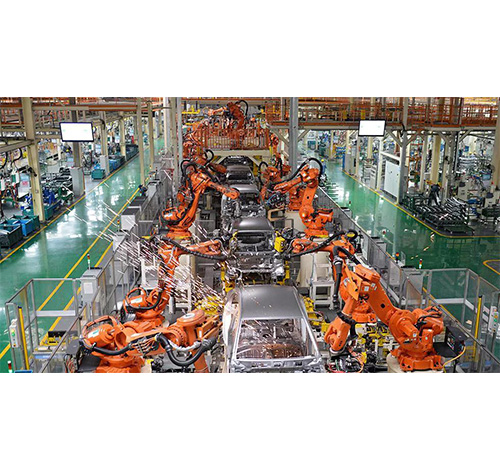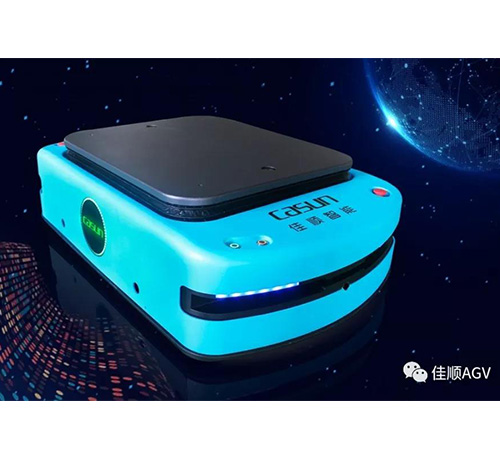 Focus on AGV industry for 18 years
Focus on AGV industry for 18 years
 Focus on AGV industry for 18 years
Focus on AGV industry for 18 years
Lithium-ion battery PACK means packaging, packaging, and assembly, and its process is divided into three parts: production, assembly, and packaging. PACK is a single component. Generally, the PACK production line only needs to undertake two functions: transmission and testing. At present, various manufacturers generally use semi-automatic PACK assembly production lines, which are mainly used for the on-line, off-line, testing, in-factory transmission and packaging of PACK. The lithium battery pack production line is relatively simple, and the core processes include feeding, bracket pasting, welding, testing and other processes.
With the rapid growth of the lithium battery industry, leading enterprises have rapidly deployed, increased production capacity, and practiced PAC line optimization, actively trying to apply intelligent equipment, robotic arms, collaborative robots, mobile robots, etc., to improve the efficiency of PACK lines.
The lithium battery manufacturing process requires high-precision equipment reliability, stability and process control, as well as intelligent processing requirements for production data, forcing the power battery production line to be automated and intelligently upgraded.
Battery PACK is the core energy source of new energy vehicles. Every process detail is full of technical content, including customized development technology of battery management system, thermal management technology, current control and detection technology, module assembly design technology, aluminum alloy power battery exterior, etc. Box casting technology, computer virtual development technology, etc.
Some people in the industry believe that if PACK companies want to stand out in the future market competition, they must eliminate the traditional assembly process and production methods, because the main customer of the battery, the vehicle manufacturer's eternal requirements are safer, more reliable and consistency. Automated and intelligent production methods will become an important indicator for car companies to consider PACK companies.
1. Adopt the combination mode of power conveying line and tooling pallet to realize the transfer of PACK between each station, and the robot (AGV/AMR) carries the pack material cart to transfer and test and assemble the test station;
2. The mobile robot (AGV/AMR) interacts with the manipulator, line-side equipment, MES system, etc. to realize the process flow of automatic Pack production;
3. Connect with the MES system, call for materials independently, and realize the material turnover of the Pack automatic production line;
1. High automation: Robots (AGV/AMR) in the production line automatically load, sort, assemble, screw, weld, assemble, and test. The module line realizes 0 workers (except material personnel), and material transfer is realized by robots. ;
2. High-reliability design: Robots are used to realize core functions. Each station has the characteristics of high precision and easy changeover. Combined with buffer stations, it can absorb product fluctuations across the line and improve production flexibility;
3. Flexible design of the production line: In the case of abnormalities in the upper and lower processes, the system intelligently automatically puts in/takes the product from the transplanting platform according to the process beat, and at the same time, the cycle can be greatly shortened during debugging. When the product process is changed, some workstations can be replaced to realize process switching;
4. Stability design: A large number of robots improve the automation level and stability, such as battery sorting, shelling, etc., which are fast and key parts;
5. MES system: The MES data management system runs through the entire production process of the factory, leading the management and control of all levels of the entire production process, tracing the production process parameters, quality status, material status and other refined control.
CASUN smart solution improves the overall automation and intelligence of the PACK line, and greatly improves the manufacturing efficiency of the lithium battery industry.





